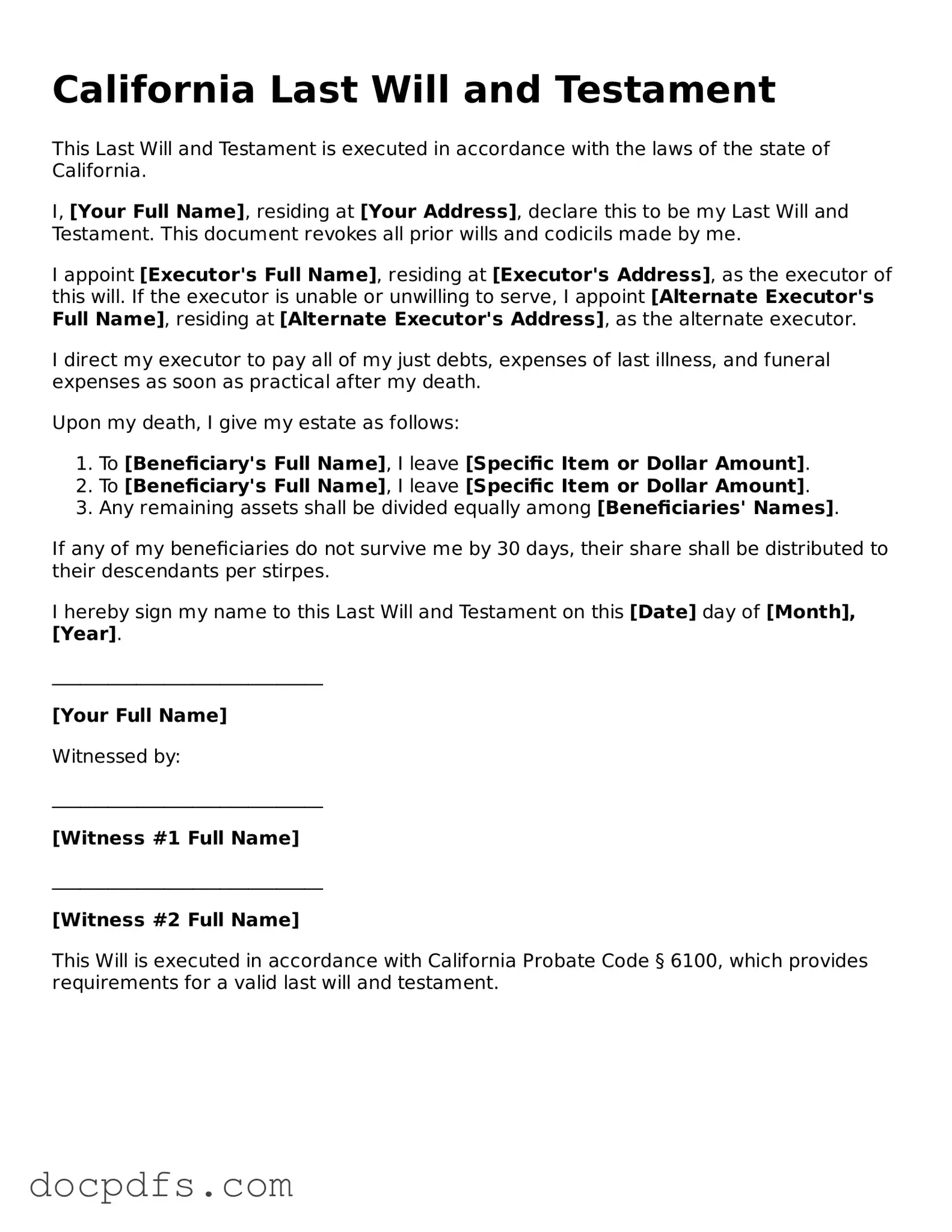Free California Last Will and Testament Form
A California Last Will and Testament form is a legal document that outlines an individual's wishes regarding the distribution of their assets after their passing. This form serves to ensure that personal belongings, property, and financial matters are handled according to the individual's preferences. Understanding the importance of this document can provide peace of mind for both the individual and their loved ones.
Open Last Will and Testament Editor Now
